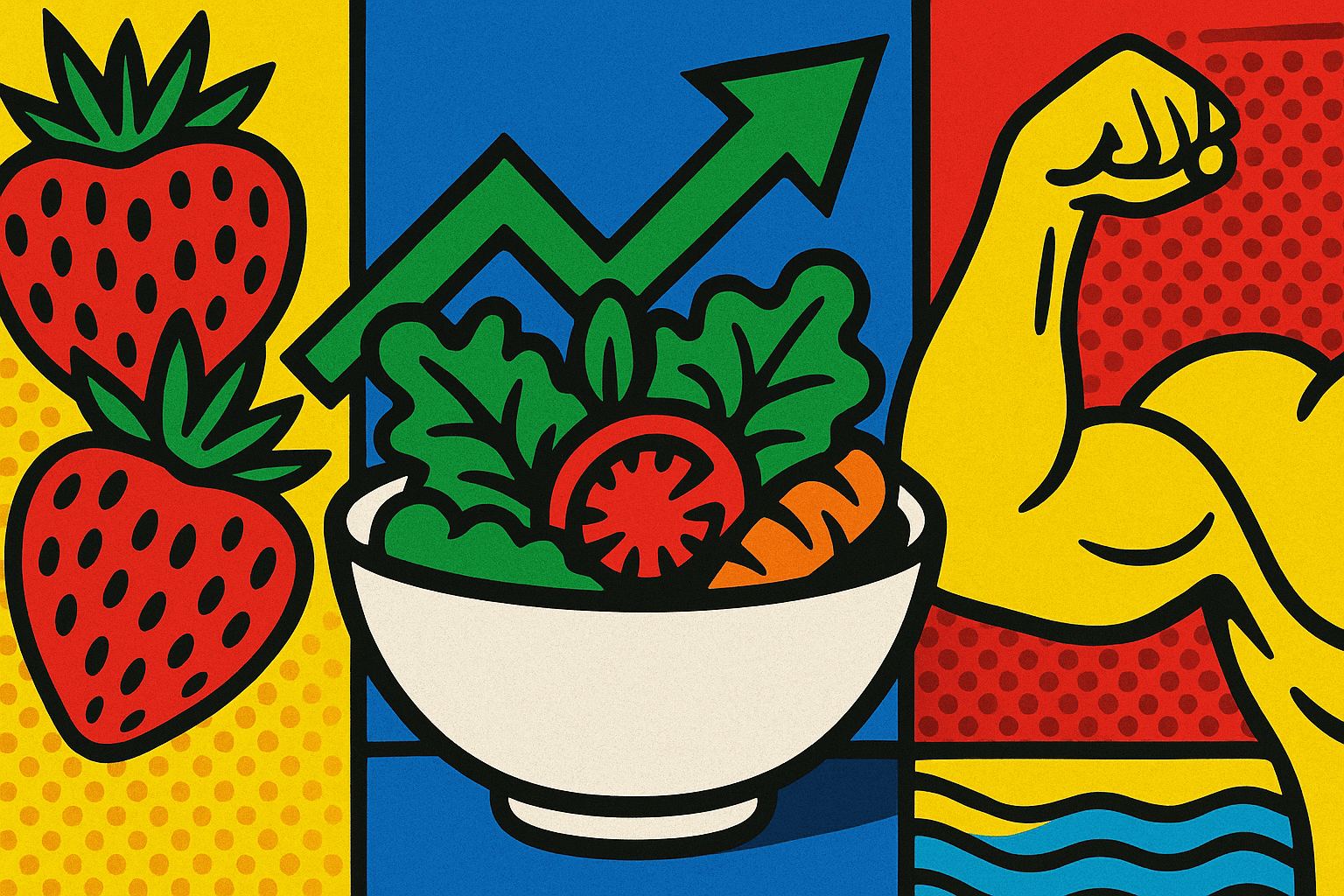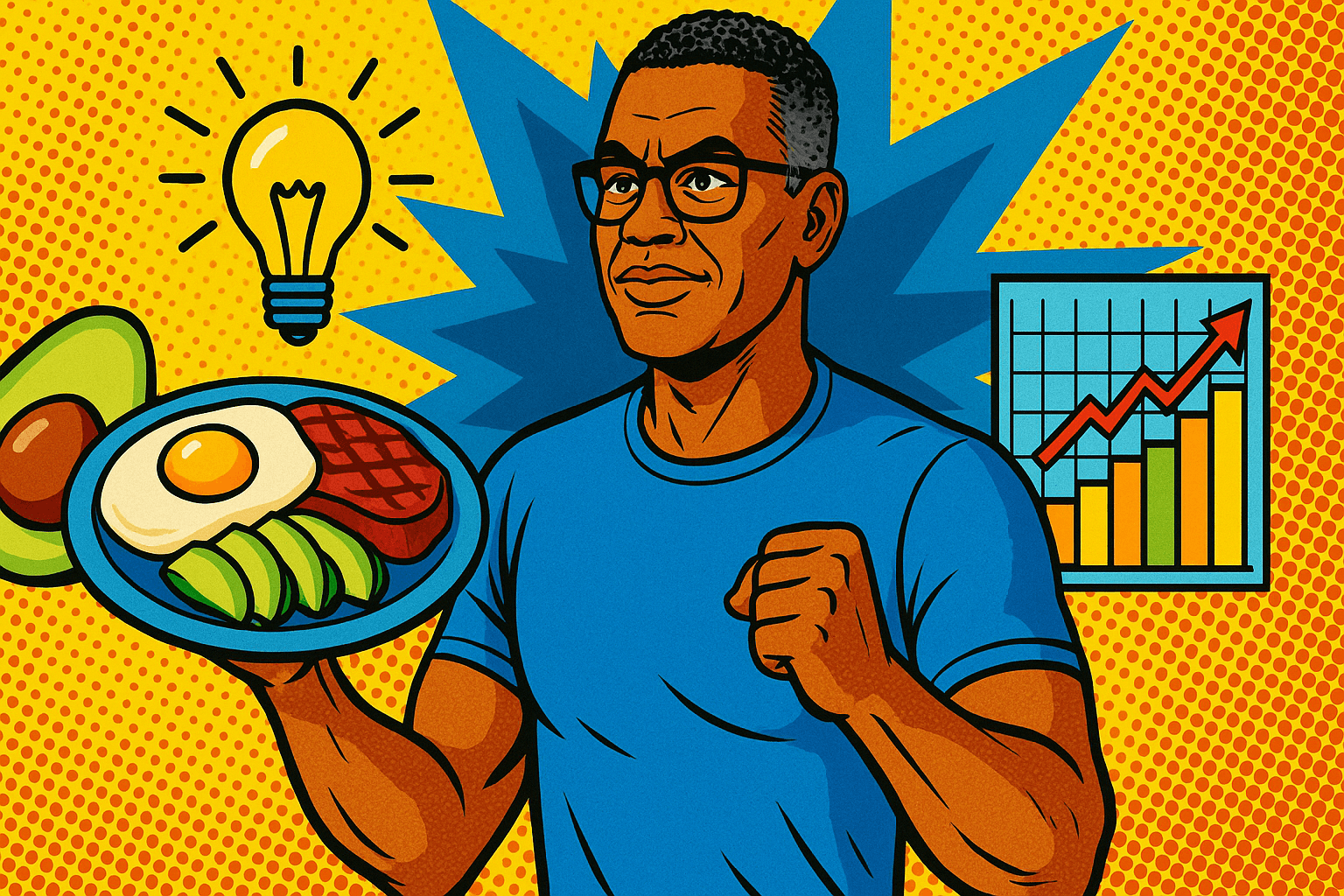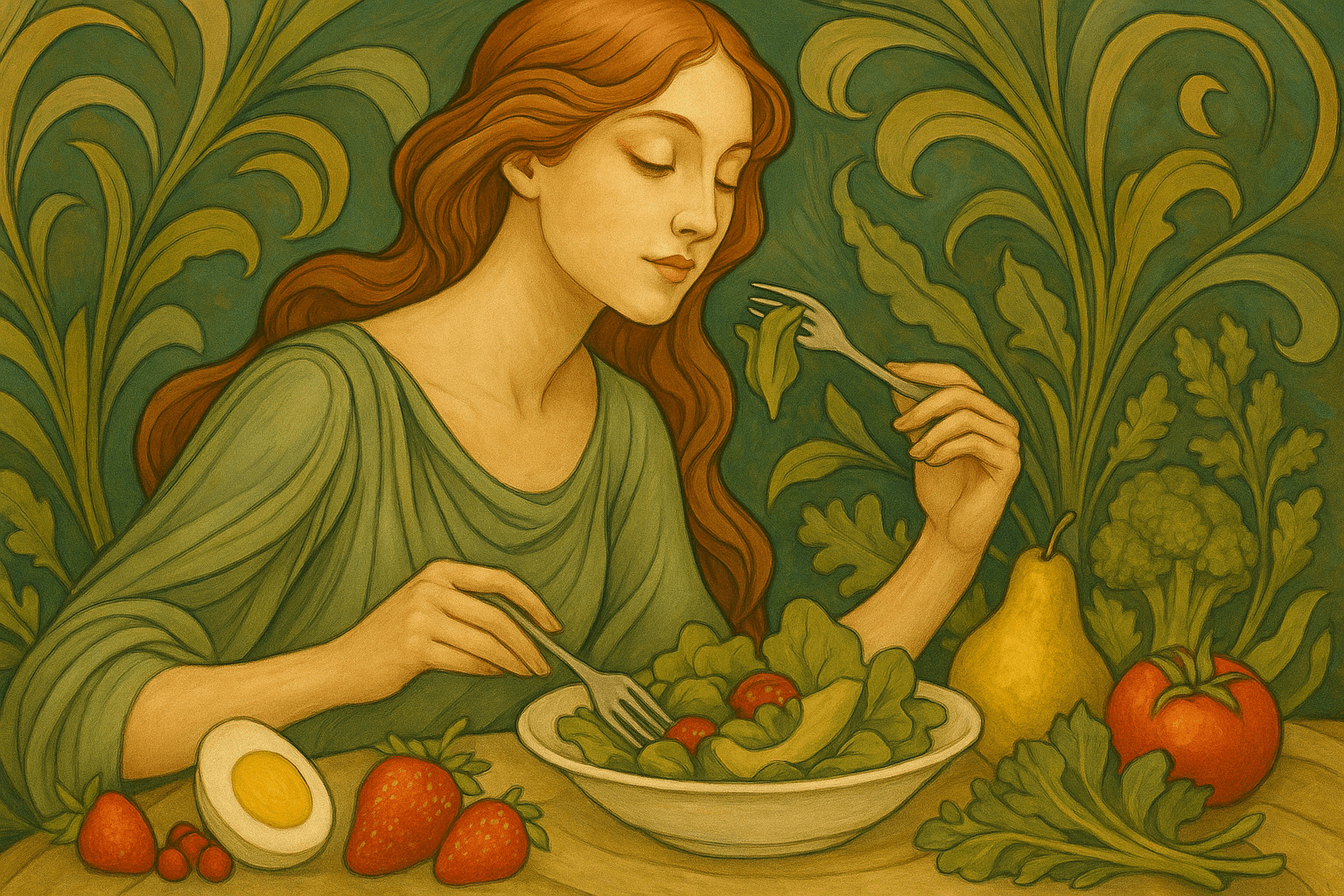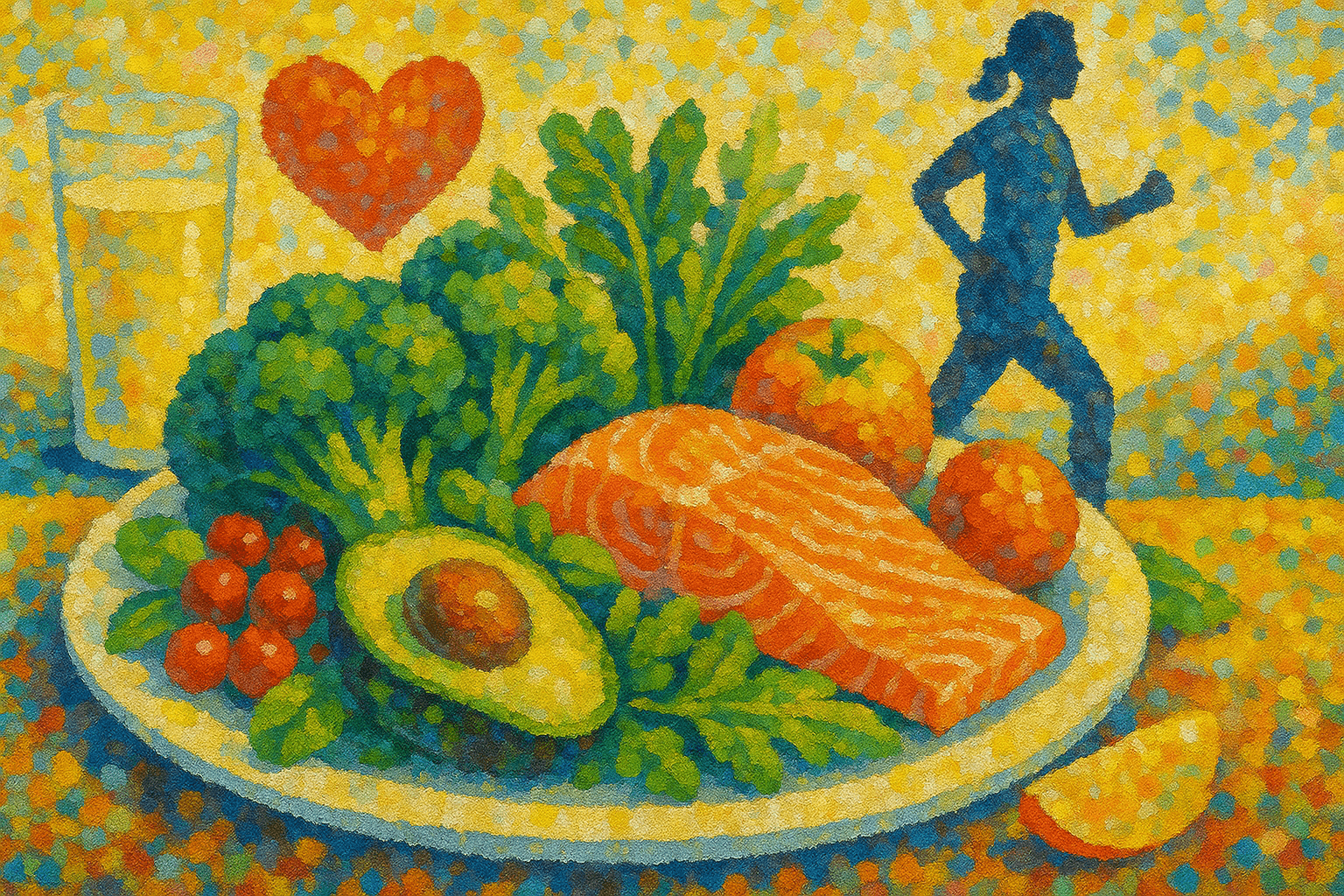The Balanced Plate: A Realistic, Science-Based Guide to Eating with Diabetes
Published on June 11, 2025
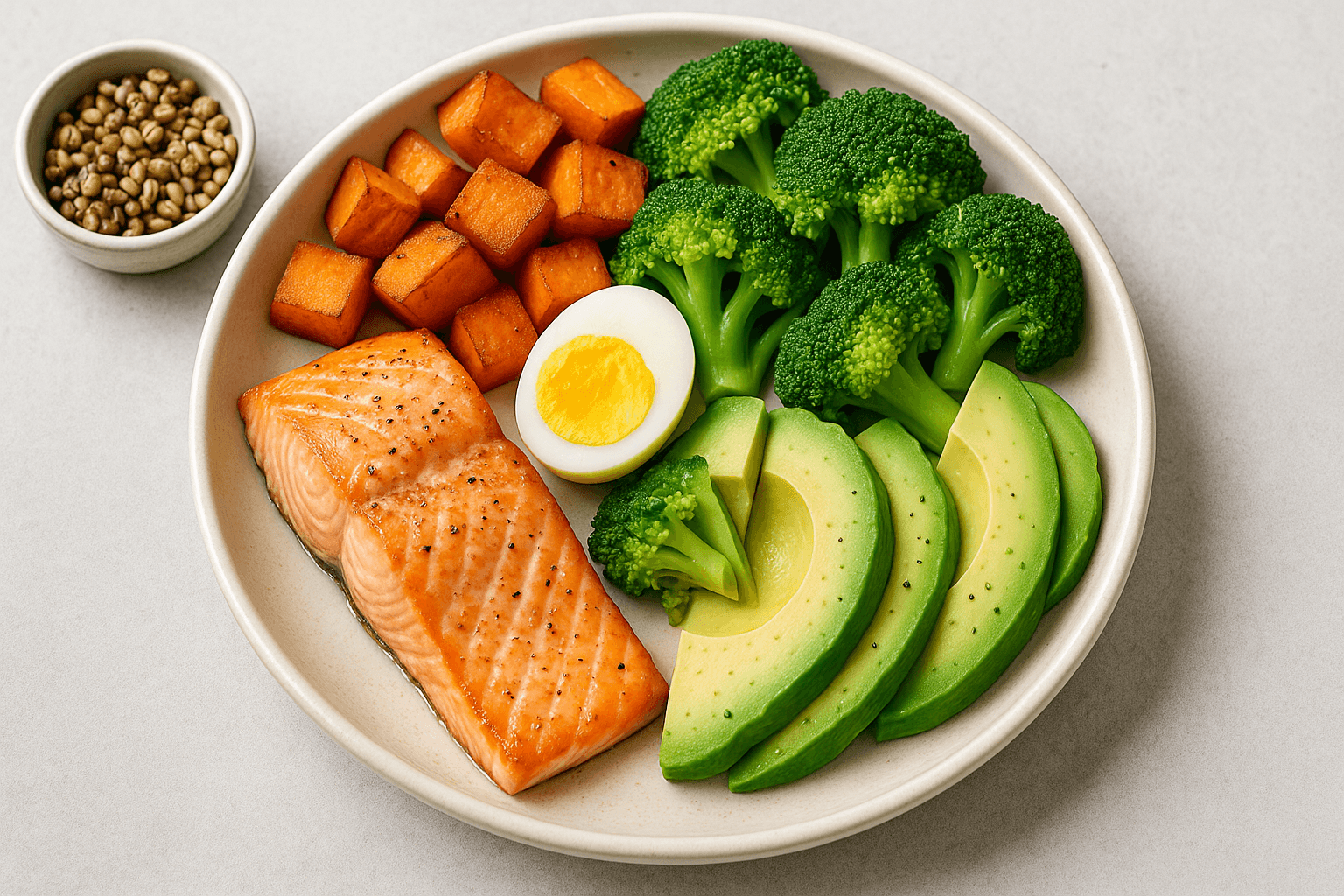
Managing diabetes is not about deprivation — it’s about making smart, consistent food choices that help stabilize your blood sugar, energy, and mood. A balanced approach makes eating both effective and enjoyable.
What Happens When You Eat?
Carbs are broken down into glucose, which raises your blood sugar. But pairing carbs with protein, fat, and fiber can slow that process down and help you avoid spikes.
Highly processed or overcooked foods (like mashed potatoes or mushy pasta) tend to raise blood sugar faster than whole or lightly cooked alternatives.
The Power of a Balanced Plate
A diabetes-friendly plate should include:
Half the plate: non-starchy vegetables (spinach, zucchini, broccoli, peppers)
One fourth: lean protein (chicken, fish, tofu, eggs, beans)
One fourth: high-fiber carbs (quinoa, sweet potatoes, lentils, brown rice)
A thumb-sized portion of healthy fats (olive oil, avocado, nuts)
This ratio helps control post-meal glucose and keeps you full and nourished.
It’s Not About Zero Carbs
Glucose is essential for energy. The key is choosing the right carbs and combining them wisely.
Best carbs to include:
Whole grains (steel-cut oats, barley, bulgur)
Beans, lentils, chickpeas
Fruits with skin (berries, apples, pears)
Non-starchy vegetables (eat freely)
What to avoid or minimize:
Sugary drinks
White bread and refined snacks
“Naked” carbs (like white rice or crackers alone)
Eat fruit in moderation, paired with protein or fat to reduce blood sugar impact.
Timing: The Meal Rhythm Method
Eat every 4–5 hours to help your body clear insulin.
Avoid skipping meals or grazing all day.
Try to eat at consistent times — this supports your circadian rhythm and may improve insulin sensitivity.
Eat more earlier in the day (“front-loading”) to stabilize blood sugar overnight.
Smart Snacks to Balance Blood Sugar
Pair fiber with protein or healthy fats:
Apple + almond butter
Greek yogurt + chia seeds
Carrots + hummus
Boiled egg + cherry tomatoes
Rice cake + cottage cheese + cucumber
Grapes + walnuts
Snacking isn’t bad — mindless snacking is. Eat slowly and treat snacks like mini meals.
Simple, Balanced Meal Ideas
Breakfast: Eggs + spinach + whole grain toast + avocado
Lunch: Quinoa salad with black beans, peppers, cucumbers, olive oil, and feta
Dinner: Salmon patty + roasted Brussels sprouts + sweet potato
Snack: Cottage cheese + strawberries + walnuts
Batch cook a grain bowl or soup to stay ready and reduce last-minute takeout temptation.
Mindful Eating Is Your Secret Weapon
Slow down, chew fully, and eliminate distractions while eating. This helps:
Improve glucose response
Recognize fullness
Reduce stress-related eating
Try this: set down your fork between bites. Breathe. Focus on taste and texture.
Blood Sugar Stabilizers Beyond Food
Sleep: Poor sleep increases insulin resistance and cravings
Movement: Walk 10–15 minutes after meals
Stress: Cortisol spikes blood sugar
Hydration: Dehydration raises blood sugar
Even standing or stretching post-meal helps
Track patterns between your meals, sleep, stress, and glucose to fine-tune your personal strategy.
Final Thoughts
Diabetes doesn’t mean flavorless or rigid eating. It means learning your rhythms and repeating what works.
Focus on real, whole foods
Pair your nutrients wisely
Stick to a steady eating schedule
Practice mindfulness and consistency
With a little effort, you can feel energized, in control, and enjoy what’s on your plate. Let’s build that balance — one meal at a time.



